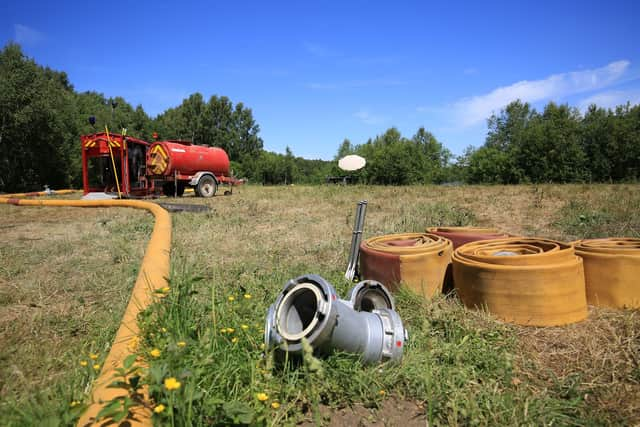Doncaster farmland in £4.5m scheme to take CO2 out of the atmosphere
and live on Freeview channel 276
Government ministers say a project on farmland in the borough is among those due to be trialled in a £4.5 million scheme for investigating the viability of greenhouse gas removal methods.
Amanda Solloway, parliamentary under-secretary for the Department for Business, Energy and Industrial Strategy, confirmed the scheme was part of the programme after she was asked in the House of Commons if a shortlist has been drawn up or projects identified.
Advertisement
Hide AdAdvertisement
Hide AdShe said: “As part of the UK Research and Innovation’s (UKRI) Strategic Priorities Fund Greenhouse Gas Removal Demonstrators programme, research teams across the UK will investigate the viability of five innovative methods of large-scale greenhouse gas (GHG) removal from the atmosphere in demonstrator projects of up to £4.5 million.


"In conjunction with a Directorate Hub led by University of Oxford for the programme, these investments aim to help the UK reach its legislated net-zero climate target by 2050.
“These five GHG removal (GGR) demonstrator projects will investigate:
“Management of peatlands to maximise their GHG removal potential in farmland near Doncaster, and at upland sites in the South Pennines and in Pwllpeiran, west Wales;
Advertisement
Hide AdAdvertisement
Hide Ad“Enhanced rock weathering – crushing silicate rocks and spreading the particles at field trial sites on farmland in mid-Wales, Devon and Hertfordshire;
“Use of biochar, a charcoal-like substance, as a viable method of carbon sequestration. Testing will take place at arable and grassland sites in the Midlands and Wales, a sewage disposal site in Nottinghamshire, former mine sites and railway embankments;
“Large-scale tree planting, or afforestation, to assess the most effective species and locations for carbon sequestration at sites across the UK. It includes land owned by the Ministry of Defence, the National Trust and Network Rail;
“Rapid scale-up of perennial bioenergy crops such as grasses (Miscanthus) and short rotation coppice willow at locations in Lincolnshire and Lancashire.
Advertisement
Hide AdAdvertisement
Hide Ad“The demonstrator projects have already been chosen and notified.”
The results will be used to shape longer-term government decision-making on the most effective technologies to help the UK tackle climate change and reduce CO2 emissions.